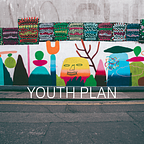Exploring the Soundscape: Interactive Tools for A More Engaging Participatory Urban Planning
Authored by project team member Maurizio Goina (Sound and Music Computing Group at KTH, Sweden).
Within the vibrant and ever-changing fabric of our cities, the sounds surrounding us tell complex stories. The noise of traffic, the chirping of birds, and the voices of people: all contribute to creating a unique soundscape that profoundly influences our well-being and our perception of urban spaces.
In this context, the concept of the “soundscape” emerges as a cornerstone for transforming our cities into more sustainable and welcoming places, placing sensory experience and the needs of the diverse communities that inhabit them at the centre. But what exactly does the term “soundscape” mean? Coined by the Canadian composer R. Murray Schafer in the 1970s, this term refers to the totality of sounds present in an environment, including both natural and those generated by human and technological activities. Schafer proposed considering the sonic environment as a true musical composition, where each sound has a specific role and contributes to the overall experience of a place. One of the main methods he introduced and used to promote awareness of soundscapes and human perception is the soundwalk which involves taking an intentional walk during which one is (in some cases, blindfolded) focused on listening to the totality of the sounds surrounding the environment one walks through.
The sensory awareness of the sonic world around us matters. Often, we are immersed in sounds without paying conscious attention to them, and the soundwalk encourages us to focus on these sounds, revealing the richness of the soundscape. In recent decades, the concept of the soundscape has gained increasing attention in the fields of urban planning and design. Planners are interested in how urban soundscapes contribute to place attractiveness and come to influence well-being and eventually have an influence on health.
Thanks to new interactive digital technologies, it is now possible to explore and manipulate soundscapes in the context of spatial planning in innovative and more participatory ways. One such tool is the Our Sound Space (OSS), an interactive installation that allows for exploring and mixing different soundscapes in real time.
OSS is a tool developed in a research context on youth participation in spatial planning. The aim is to provide new opportunities for youth engagement in discussions on urban planning, encouraging them to express their opinions and actively contribute to the creation of more sustainable and inclusive urban environments.
The OSS installation was placed in a public location (NEO Building at Fleminsberg, Huddinge), where people of different ages and backgrounds move around, thus offering an excellent opportunity for interaction and exploration. Through a simple and intuitive interface, visitors could select and mix a wide range of sounds, from nature to urban daily life, thus creating a unique and personalized soundscape. They reported interesting feedback, highlighting the potential of the sonic dimension in shaping perceptions and experiences of urban spaces.
The OSS tool also offers interesting insights for urban design and planning, as it can be used to gather data on people’s sound preferences and their perceptions of urban spaces. This information can be used by urban planners to create more welcoming and enjoyable environments, taking into account the diverse needs and aspirations of residents (see here our preliminary study into youth preferences). However, there are still challenges to be addressed in the field of interactive use of soundscapes in urban planning. It is important to ensure that these technologies are accessible to all, and it is essential to work closely with local communities to ensure that their voices are heard and respected in the decision-making process.
Thus, in our research, we have seen that the integration of interactive soundscapes into urban planning offers new opportunities to create more sustainable, inclusive, and stimulating urban environments. Tools like OSS, can actively engage citizens in the co-creation of our cities, promoting greater awareness and appreciation of the sonic heritage that surrounds us.
Further readings:
Goina, M., Bresin, R. and Rodela, R., (2023). Our Sound Space — OSS: an installation for participatory and interactive exploration of soundscapes. In 20th Sound and Music Computing Conference, SMC 2023, Hybrid, Stockholm, Sweden, Jun 15 2023-Jun 17 2023 (pp. 255–260). Sound and Music Computing Network.
Johnston, C., & Lorimer, H. (2014). Sensing the city. Cultural Geographies, 21(4), 673–680. http://www.jstor.org/stable/26168607
Roberts LF, Lounsbury O, Awuzudike V, Jennings N, Lawrance EL. Healthy, (2022) Environments: Understanding Perceptions of Underrepresented Communities in the United Kingdom. Int J Environ Res Public Health. Aug 5;19(15):9643. doi: 10.3390/ijerph19159643. PMID: 35955008; PMCID: PMC9367862.
Rodela, R., Lundmark, S., Goina, M., Zakharova, K., Didon, A. and Sheikh, F.A., (2022). Sensing the City from a Young Person Viewpoint: Seeing and Hearing in our Living Environments: Summary of the activities delivered by the Planning with Youth project team at the 2022 SH-Summer School. Södertörns högskola.
Spence, C. Senses of place: architectural design for the multisensory mind.(2020) Cogn. Research 5, 46 . https://doi.org/10.1186/s41235-020-00243-4
